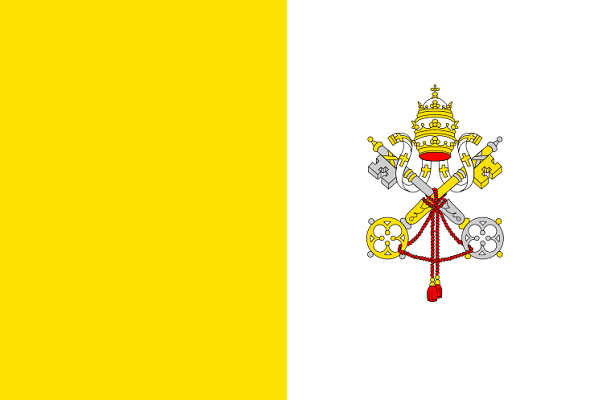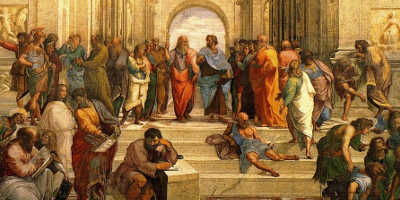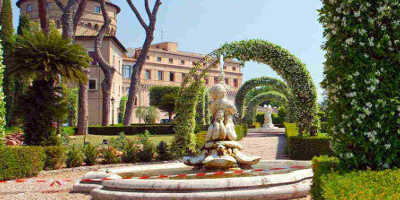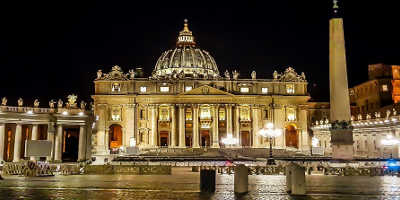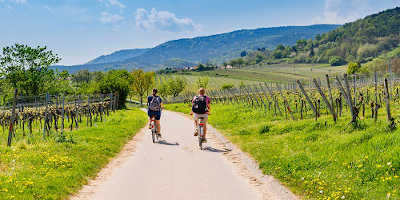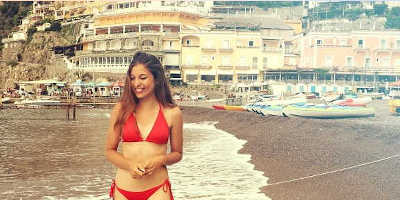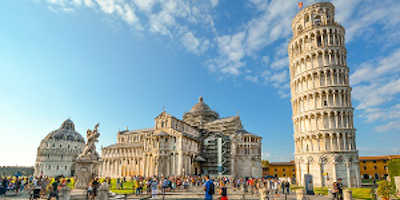The Flag of the Vatican City
The Vatican City is the smallest sovereign state in the world making it one-of-a-kind. What can the Vatican flag tell us about this independent city-state?
Each year millions of tourists’ flock, ironically, to the smallest country in the world to discover the grandeur of St. Peter’s Basilica and appreciate the artistry of the Sistine Chapel. The independent city state also houses the head of the Catholic Church ruled over by the Pope. A must visit attraction when in Rome, the Vatican City is home to one of the world’s greatest collection of art which is evident as soon as you walk into St. Peter’s Square. Your eyesight is immediately drawn to the large obelisk brought over from Egypt to Ancient Rome. The towering structure is said to contain the ashes of Julius Caesar and pieces of the true cross. The important site is allegedly where the crucifixion of St. Paul occurred thousands of years ago, and in such a place of reverence, there is a certain dress code that must be upheld. When visiting be sure to wear clothing that covers both your shoulders and your knees. The Pope can be seen on Wednesday services but if you miss out, there are a multitude of artefacts, art pieces and architecture to see that will take your breath away.
Flag of the Vatican City
The flag of the Vatican City has a long history, with the first papal flag dating back to 1195. The first of its kind, it donned the colours of red and white. However as it stands, the current flag dates to 1929 when Pope Pius XI on the 7th of June signed the Lateran Pacts. These signified the beginning of the Vatican City as a sovereign state. The Vatican City State flag is square in shape, with yellow and white vertically divided on each side of the flag. There is an emblem on the white side of it which features two keys crossed, one silver and one gold symbolising that the Pope has dominion over all spiritual matters on Earth. However, some say that the keys refer to the New Testament and how St. Peter has the key to the kingdom of Heaven. On top of the keys that cross over each other is the Papal Tiara which is a symbol of sovereignty.
The Holy See
You may have heard the term Holy See being used in conjunction with the Vatican City, however, contrary to popular belief, Holy See isn’t another word used to refer to the Vatican City. The Holy See is the independent sovereign entity and the governing body of the Catholic Church. Its origins date back to the early days of the church and the title is given to whoever sits on the metaphorical holy chair of the Church, which is always the Pope. As a result of this fact, even when the Pope dies, the position is continuous. The Holy See is capable of having diplomatic relations and is recognised in international law.
The Vatican is the smallest country in the world, ranging in size to 0.44 kilometres. Their official language is Italian however interestingly enough there is an ATM in the Vatican City that is in the Latin language. There are only 1000 residents of the country, all Catholic and the currency used is the Euro. While we know it as the Vatican City, the official country name is the Vatican City State and the economy relies heavily on the entry fees of the museum, as well as the sale of postal stamps. The country is governed by rule of an absolute monarch, that being the Pope who is also the head of the Catholic Church. No citizen can be born in the Vatican City as citizenship is only granted based on your job role or what office you work at, because of this factor, if you were to lose your job, you would automatically become a citizen of Italy.
The Symbolism of the Papal Robes
The Pope’s wardrobe is recognisable worldwide but what is the reasoning for the clothes and accessories that he wears? The mitre is a ceremonial headdress that is only worn by the Pope, Cardinals and Bishops. They are usually ornately decorated and are almost always white with gold lining. It is a folded cap that dates to the 10th century, however when it first became popular to wear, it looked more like a papal crown, as coinage with St. Peter on it showed him wearing a crown like headdress. A stole is worn by the Pope draped across his chest hanging over his shoulders, priests also wear a stole however it is crossed around the neck. The Pope is known to kiss the stole before he puts it on and is embroidered with holy symbols, most prominently a cross. It is said to symbolise the duty and sacrifice that the Pope holds once he takes on the role of the papacy.
The cassock is the most recognisable of Papal vestments and is an ankle length garment which is worn every day. Priests will wear a black version of this garment however the Pope wears it in white to show that he is the secular leader. The zucchetto is a skull cap, depending on the colour of the hat this denotes what the wearer’s rank is in the church. The rule is that lower ranking officials must remove it when in the presence of higher ranked members. The zucchetto is made of silk and the Pope wears white, whilst cardinals wear scarlet and priests wear black.
The Papal shoes are made of red morocco leather lined with gold braiding and a gold cross. The reason that the shoes are red is because the colour is very powerful and was once the most expensive dye that could be purchased. Nowadays it seems like the papal shoes are a personal choice as Pope Francis has decided to go with a conservative black shoe during his papacy. The Pallium is a sash like garment that showcases the powerfulness of the leader of the Catholic Church and is only allowed to be worn by bishops if they have permission to from the Holy See. The sash is worn around the neck with two cloth lapels that hang down both the front and the back, its origins date back to the 4th century and is made of silk.
Related article: Why you should visit the Vatican Historical Museum?

